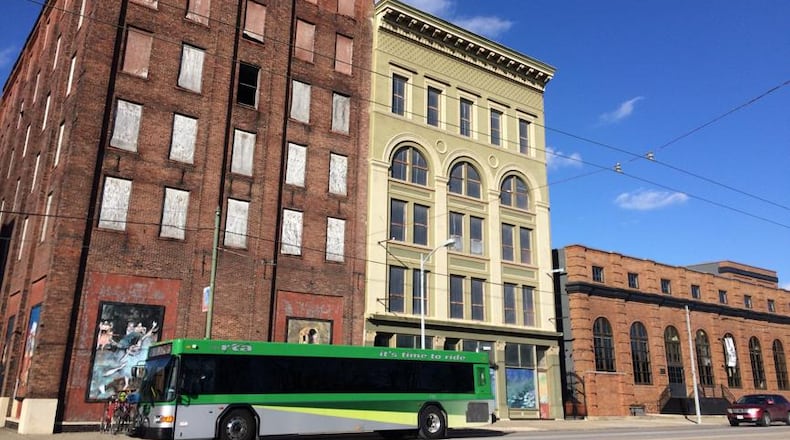A pair of fast-growing Dayton technology start-ups — Mile Two and Battle Sight Technologies — will move to the building, anchoring its development, a Woodard announcement said.
MORE: Oregon District Tragedy Fund: 'There's no right and wrong answer'
However, the project depends on city, state and federal incentives to move forward, Woodard cautioned.
Mile Two has committed to taking multiple floors and Battle Sight Technologies will take 5,000 square feet on the building’s lower level, the developer said.
Several other companies have shown interest in the site, and Woodard expects it will reach at least 75 percent occupancy when the building officially opens, perhaps by the end of 2020.
The building will be re-branded as The Manhattan, a nod to Dayton’s role in the Manhattan project, which used three floors of the building from 1946 to 1948, Woodard noted in a release announcing the project.
RELATED: Dayton paid $450K for property and sold it for $10. Why the city made that deal.
“This area is quickly turning into a hub for technology and defense downtown,” Nick Ripplinger, president of Battle Sight, said in Woodard’s release. “As we’ve grown, we have a strong desire to be among peers where we can collaborate and share ideas to drive growth.”
“Over the last four years, it has been great to be a part of the resurgence of this area, especially with the growing density of tech companies,” said Jeff Graley, president of Mile Two.
Mile Two has grown from three employees in what is known as the “444 building” on East Second Street four years ago to more than 40 employees today and plans for six additional employees soon.
The nearby Avant Garde building — another Woodard project which is now 100 percent leased — saw similar demand.
“We’ve been successful because we’ve provided something in high demand for the region,” Woodard said. “Unique work spaces that preserve the integrity of historic buildings, attractive to the changing workforce.”
Woodard has applied for financing incentives, which he called “critical” to the project.
The first is inclusion in an existing Community Reinvestment Area, for which he has applied to the city of Dayton.
The second is an Ohio State historic tax credit, via the Ohio Development Services Agency, which would provide a 25-percent tax credit on eligible capital spending, such as the installation of a new heating, ventilation and air-conditioning system. That credit will also make possible replacement of the building’s 125 windows, repair of its full brick exterior and other updates.
The project also is planning to use the federal historic tax credit program.
Woodard expects to submit final applications for incentives this month, with final word coming in December and construction starting early next year.
The building could then be open by the end of 2020.
“We are optimistic this will be another great revitalization project, breathing new life into a historic building for downtown Dayton,” Woodard said.
Dayton government bought the building in 2012 for a potential project that failed to materialize before selling to Woodard for $10 in 2018.


